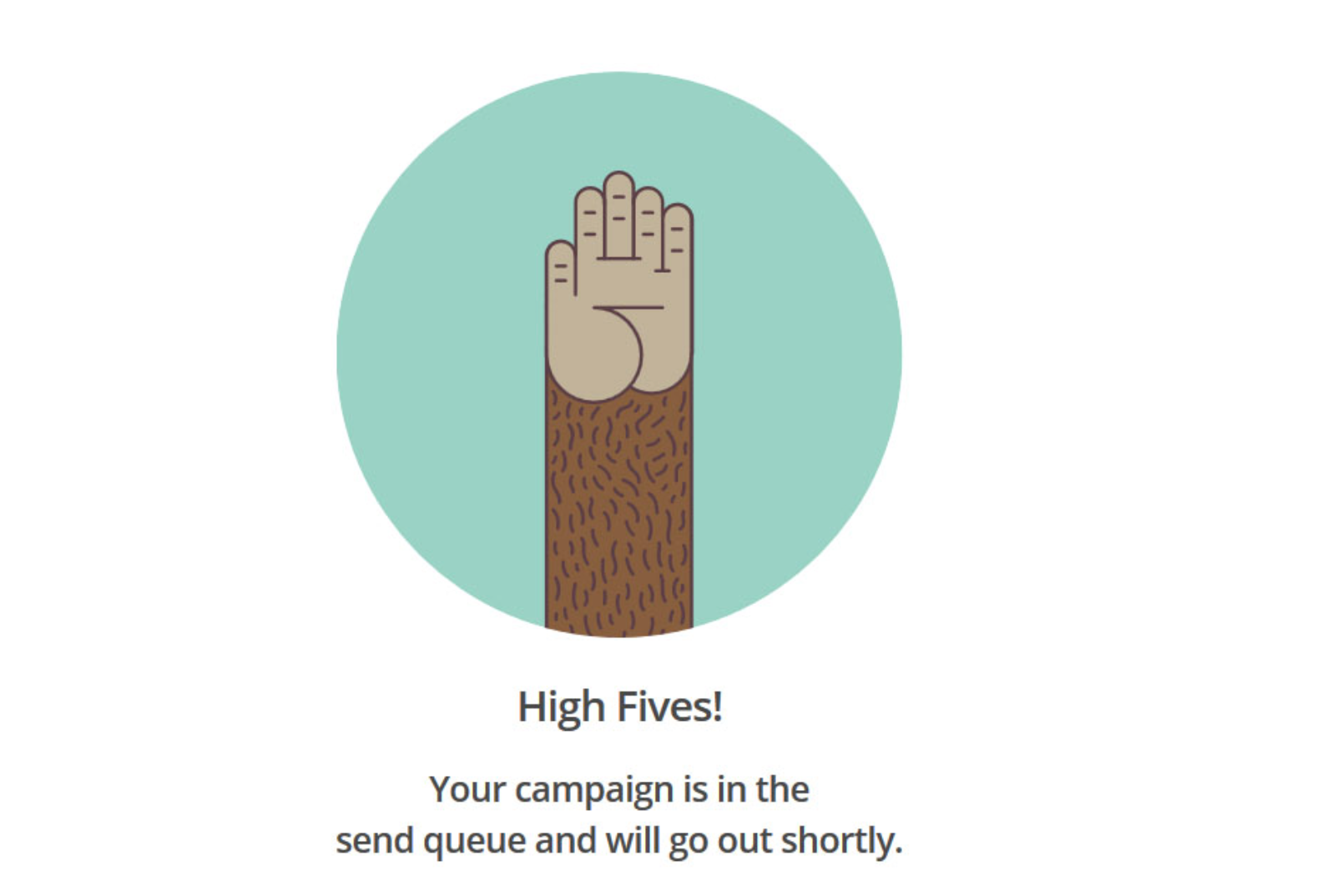There’s a new job in town. Well, maybe not “new,” but certainly popping up with increasing frequency. Google’s looking. Amazon’s looking. Dropbox, Paypal…many of the big players in tech are now looking for User Experience Writers. It may seem like a bit of a fad, and a quiet one at that, but writing-focused user experience designers will be a critical part of the way we design for experiences from here on out.

I like to keep an eye on job alerts in my city, just to see what the big tech companies are prioritizing. In 2016, I saw a great deal of listings at Amazon, Google, and a few other smaller players, all calling for UX Writers.
As a writer who stumbled into UX one day many years ago, I was understandably excited; finally, organizations are realizing that copywriting shouldn’t only land on the marketing team’s desk. I thought of interface copy, calls-to-action, all the little bits of text I’ve worked on over the years across several teams, and felt satisfied that Our Time Has Come.
But then I realized something. It’s not just copy. The reality of user experience design today is that our experiences with technology are becoming more and more seamlessly integrated into our lives. We can talk to machines to order groceries (well, I can, in Seattle). We ask a robot on the phone to check our account balances. We can turn on a video game, like ufabet เข้าสู่ระบบ, by asking the XBox. And in virtual reality, where we can’t touch anything, our voices can do what our hands might not be able to.
There’s an increasing amount of overlap between graphical user interfaces (GUI) and voice user interfaces (VUI), which necessitates a new skillset: user experience professionals with deep understanding of narrative design and conversational design.
Let’s take a look at what UX writing is (and isn’t), what companies are looking for in these writers, and general best practices for the discipline.
What is UX writing?
I’ve spent the past few months deeply curious about this emerging role; I’ve been gathering job descriptions and interviewing existing UX writers, trying to wrap my head around it. I’m happy where I’ve landed.
Based on my research around job descriptions and conversations with real life UX writers, I’ve determined that at its simplest, UX writing is the act of writing copy for user-facing touchpoints. This copy must not only embody the voice of the organization, but must also be considerate and useful for the user.
In the past, for instance, a good UX writer (probably not by title, but by skill) decided that when a user sends a newsletter with MailChimp, they’re probably in a state of minor anxiety. To make them feel better about what they’ve just sent, the MailChimp team designed a success message that lightened the mood and congratulated the user, rather than simply report a status.

“I just sent an email out to 5,000 people oh god please don’t have any typos…oh! Thanks Freddy! High five!” MailChimp’s success message takes into account the user’s emotional state after sending/queuing up a newsletter.
After digging through a few dozen job descriptions for UX writer roles, there are definitely some common responsibilities.
Research
Across the board, UX writers seem to be full-fledged members of the UX team, and are expected to conduct or partner in user and audience research as part of the user centered design process. Here’s an example from one job description from a digital agency:
Unpack customer insights, and iterate on the content and the overall design to produce innovative products and features.
Writing (duh)
This should come as no surprise, but writing is pretty central to the role of UX writer. And we’re not talking, “People tell me I’m a pretty good writer!” kind of writing. We’re talking, “People tell me I’m a great writer, and I can explain every single word choice I make and defend it to the grave” kind of writing. Google refers to their UX writing team as the “resident wordsmiths.” Here’s an example from an Amazon job listing:
You will write innovative, stunning, memorable and effective copy, combining creative inspiration with creative leadership to introduce new ideas and experiences to the world.
Collaboration
I’m not sure I’d consider this unique to the role, but most job descriptions call out cross-team collaboration as a critical responsibility in UX writing. This is likely unsurprising to anyone who’s worked professionally as any kind of writer; everyone has an opinion about words. Here’s an example from a job listing:
Collaborate across teams with marketing, legal, and business development, in order to ensure copy doesn’t get anyone in trouble.
There are also a few responsibilities that pop up here and there, but aren’t universally expected. Those include:
- Build out and execute editorial strategy
- Build out and conduct content strategy
- Write marketing copy
- Write user friendly training materials
Through all the job descriptions I’ve pored over, it seems like these other not-strictly-UX-writing responsibilities appear for a number of reasons. One reason might be that the organization can’t justify hiring someone who only writes interface copy, so instead looks for a cross-functional team member who can kill two birds with one stone, so to speak. Another reason might be a lack of understanding of the skillsets involved in writing vs. content strategy, writing vs. editorial savvy, etc. Either way, it clearly helps to be a cross-functional candidate.
It’s important to distinguish UX writers from a few other types of roles, as well. There aren’t too many formal trainings out there for UX writing, so it’s likely that any given UX writer is strongly cross-functional. However, the specific role of UX writer should not be confused with the following roles:
- Technical writers — who write for clarity and accuracy first, not experience
- Content strategists — who plan for content on a grand scale, not necessarily write
- Information Architects — who focus on and build sustainable information structures and taxonomies
- Marketers — who focus on strategies and campaigns meant to attract new people to a product or service
If you’re interested in actually reading a list of these descriptions, I’ve published a list of job descriptions over at my website. Go nuts!
What are companies looking for in a UX writer?
Ok, so now we know what UX writers do, and why this role will become increasingly important. Let’s take a look at a few overarching qualities that companies are looking for in aspiring UX writers.
Educational background in communications
This one is almost universal. Companies hiring UX writers are looking for people who have had formal training in journalism, technical writing, creative writing, communications, public relations… anything that directly relates to writing. This is an interesting diversion from other more “traditional” UX roles, in that it expects an intuitive understanding of how to effectively design communications rather than, specifically, interfaces.
I’ve met a bunch of UX writers over the course of the past year, and almost exclusively, they have either an editorial background (one woman I met was formerly a science editor for Microsoft Encarta, back in the day) or a journalism background (a Google UX writer, for instance, was a tech journalist in a former life).
Fantastic writing abilities (and proof of it)
Companies interviewing for the UX writer role are actively looking for writers who can explain their choices as a visual designer might; if they’ve chosen a word for a label, they must be able to justify, based on research, why that word is a better choice than another. To use the MailChimp success message as an example, that writer may have been asked at one point, “Why ‘high five’ better than ‘Your newsletter is on its way!’?” And that writer may have answered something like, “Well, because in our user research, we discovered that users are often moderately anxious and uncertain about what they’ve just sent, and given our friendly institutional voice, this high five is more appropriate to make them feel more confident in what they’ve just accomplished.”
This is a hypothetical example, but illustrates my point. If a UX writer scores an interview with a hiring company, she should expect to be asked very explicitly to defend her word choices, whether it’s in a long form pieces, or a single label in a navigation bar.
Flexibility and initiative
The UX writer role is a new one, and one that many companies may not have clearly defined yet. UX writers have to be scrappy, and work well in a truly agile environment. They may have to define their own role responsibilities, take on cross-functional tasks (like generating a wireframe, developing voice guidelines, or plan editorial strategies), and do so effectively.
In other words, UX writers are walking into an environment where nothing is certain, and they must be able to do their jobs well, but also advocate for their own importance in the process.
UX Writers Aren’t Going Anywhere
As we see deeper integration with technology in our daily and social lives, we will see a deeper need for storytellers, people who are intuitively good at anticipating what words are needed, and when.
It’s an exciting role, and I couldn’t be happier that writers now have opportunities to bring their narrative experience to the tech table.
Here are a few sources for aspiring UX writers, not only to learn more about the practice, but also to evangelize to others.
- This technical writing guide, which while is technically, “technical writing,” is a fantastic resource for writers who have to be extremely particular about word choice.
- Harvard Business Review explains how a company is only as good as its writing.
- The Center for Plain Language stresses the importance of clearer language across disciplines, from law to medicine to web forms.
- This great intro to conversational interfaces
- Another good article about where conversational interfaces are headed
- And finally, some best practices for conversational interfaces
Ready to get your feet wet in Interaction Design? In this article we touch briefly on all aspects of Interaction Design: the deliverables, guiding principles, noted designers, their tools and more. Even if you're an interaction designer yourself, give the article a read and share your thoughts.